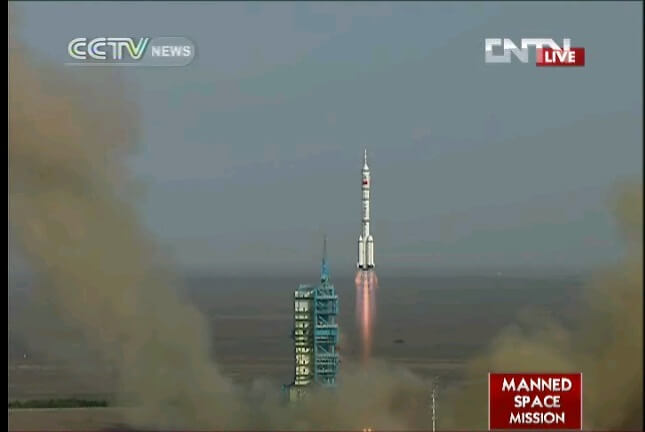Once Shenzhou 9 approaches Tiangong 1, the crew will manually dock with the component that was launched 9 months ago.

A little while ago (13:40) the manned spacecraft Shenzhou 9 was launched from western China. The main mission of the spacecraft crew, including the first Chinese technonaut Liu Yang will be connected to the Tiangong 1 space station, to allow the Chinese to learn about the process which is also a breakthrough in manned launches into space.
The technauts will arrive on Monday at the station located in orbit at a height of about 330 kilometers above the earth and will return to earth in about two weeks.
At a press conference a few days ago, the Techonauts were placed behind a glass wall in front of a small group of carefully selected journalists. They said the manual docking was a huge test, but they repeated the process over 1,500 times.
"The three of us understand each other tactically. A hand gesture or a facial expression, one movement, we understand each other deeply," Jing said.
Once Shenzhou 9 gets close to Tiangong 1, the crew will do a manual docking, but the Chinese space agency said that on subsequent flights the docking will be automatic.
Some of the reports from China stated that the Shenzhou spacecraft includes a standard docking system that would allow it to dock at the International Space Station in case China plans a visit there.
When the astronauts arrive at the small chamber that makes up the Tiangong 1 (Celestial Castle) laboratory, the team will conduct medical studies and conduct other research that includes monitoring butterflies, as well as butterfly eggs and pupae.
China has said it plans to add more components to the space station when its final version has already been built. A short document revealed last December outlines China's ambitious space program and states that the country will "carry out research to promote a lunar landing mission."
By the way Tiangong 1 is planned to stay in space for two years and will not be used as the start of the space station.

3 תגובות
Rami Yoshibov reported to the website owner that the Chinese spacecraft had connected and he did not update thanks
Good luck. As more countries enter the space, it pushes the whole field further. I guess in the long run the competition will take its toll. And the launches will be commonplace. Even for the little citizen.
Unbelievable how the Chinese are slowly and surely catching up with the Americans.
Obama with his "reform" abandoned space and advanced research to other powers..